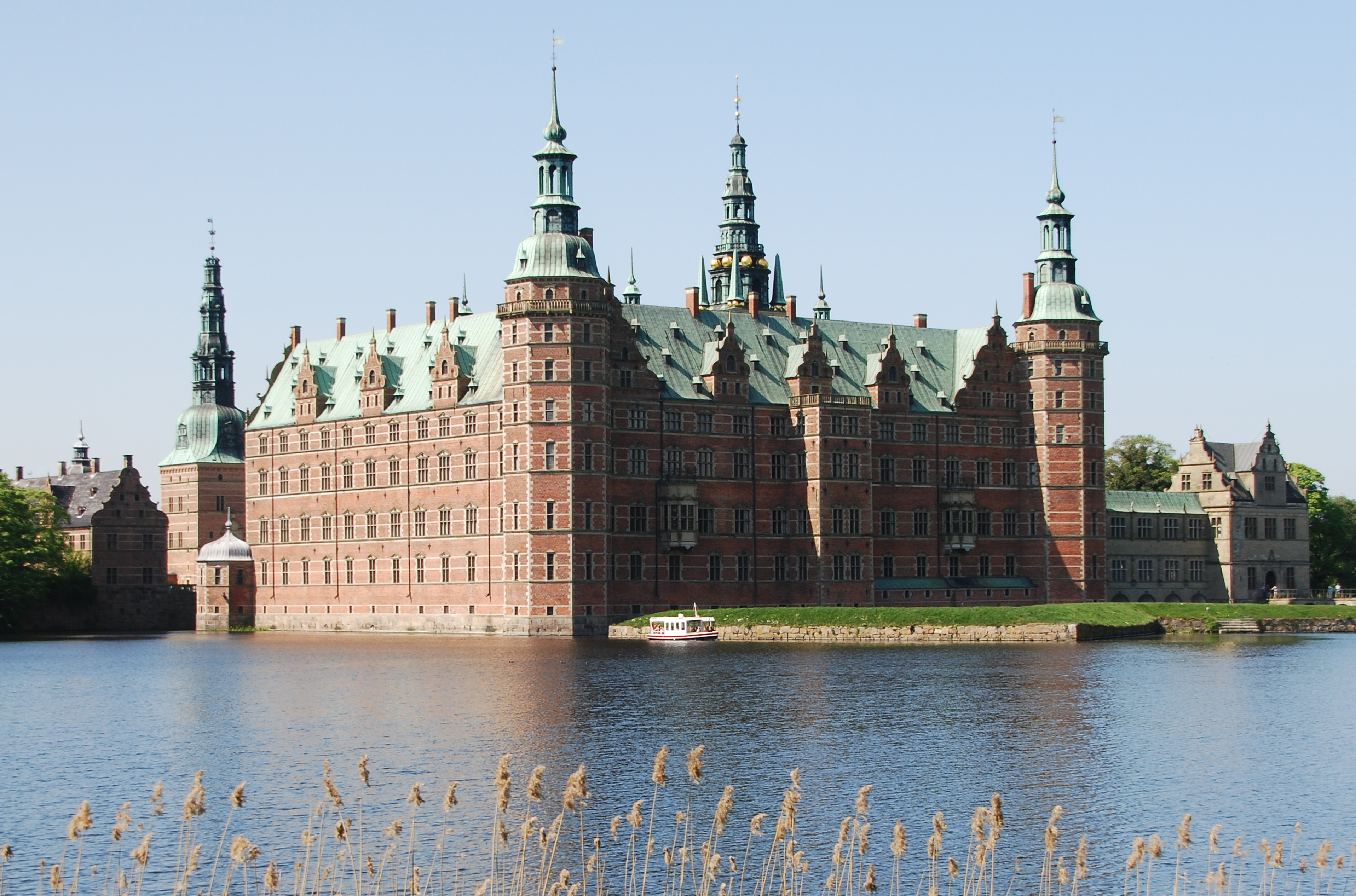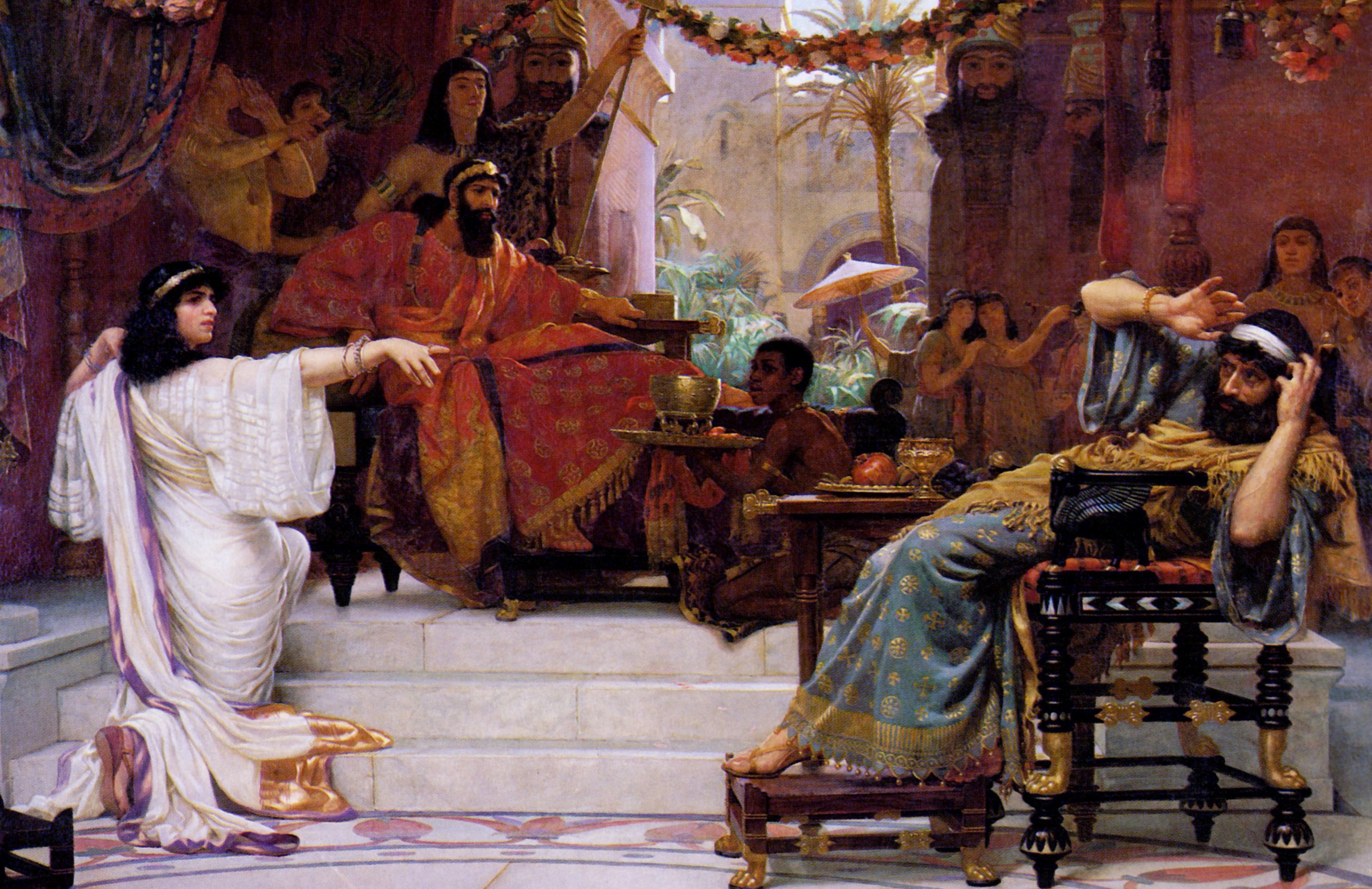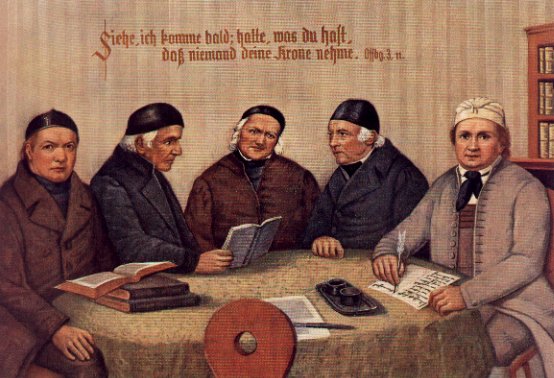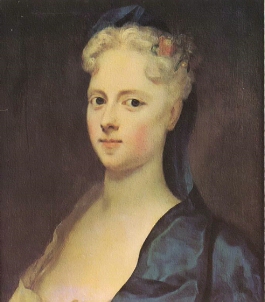|
Louise Of Mecklenburg-Güstrow
Louise of Mecklenburg-Güstrow (28 August 1667 – 15 March 1721) was List of Danish consorts, Queen of Denmark and List of Norwegian consorts, Norway as the first spouse of King Frederick IV of Denmark. In 1708–09, she was regent during her husband's trip to Italy. Early life Louise was born in Güstrow in the family of Duke Gustav Adolph, Duke of Mecklenburg-Güstrow, Gustav Adolph of Mecklenburg-Güstrow and Duchess Magdalena Sibylla of Holstein-Gottorp as a great-great-granddaughter of Frederick II of Denmark. Louise grew up into a tiny court characterized by pietistic feelings and rigid religiosity, led by her father, who wrote religious songs in pietistic spirit. In 1695, Louise was selected by Crown Prince Frederick as his bride. When it was deemed time for Frederick to marry and provide and heir to the throne, he was sent to a journey to Germany to choose a bride from some of the Protestant Princely houses. When he reached Güstrow, he chose Louise because of her beau ... [...More Info...] [...Related Items...] OR: [Wikipedia] [Google] [Baidu] |
Johann Salomon Wahl
Johann Salomon Wahl (1689, Chemnitz - 5 December 1765, Copenhagen) was a German artist who became a court painter in Denmark. Biography He trained as a painter between 1705 and 1711 with David Hoyer (1667-1720), the court painter in Leipzig. After that, he settled in Hamburg, where he worked as a portrait painter for the Duchy of Holstein, Holstein. In 1719, he was called to Denmark to work for the Danish Royal Family. When Christian VI of Denmark, Christian VI ascended the throne in 1730, Wahl was appointed as court painter. In 1737, he took over the administration of the National Gallery of Denmark, Royal Collection. In 1744, he became an honorary member of the Accademia di Belle Arti di Firenze. He was among the first Northern artists to apply the new French styles of portrait painting, emphasizing one's position in society rather than their personality, although his portraits of those outside the nobility tended to be freer in style. References * Altona Museum: ''The ... [...More Info...] [...Related Items...] OR: [Wikipedia] [Google] [Baidu] |
Frederiksborg Palace
Frederiksborg Castle ( da, Frederiksborg Slot) is a palatial complex in Hillerød, Denmark. It was built as a royal residence for King Christian IV of Denmark-Norway in the early 17th century, replacing an older castle acquired by Frederick II and becoming the largest Renaissance residence in Scandinavia. On three islets in the ''Slotssøen'' (castle lake), it is adjoined by a large formal garden in the Baroque style. After a serious fire in 1859, the castle was rebuilt on the basis of old plans and paintings. Thanks to public support and the brewer J. C. Jacobsen, its apartments were fully restored and reopened to the public as the Danish Museum of National History in 1882. Open throughout the year, the museum contains the largest collection of portrait paintings in Denmark. It also provides visitors with an opportunity to visit several of the castle's state rooms including the restored Valdemar Room and Great Hall as well as the Chapel and the Audience Chamber which were bot ... [...More Info...] [...Related Items...] OR: [Wikipedia] [Google] [Baidu] |
Eleonore Marie Of Anhalt-Bernburg
Eleanor Marie of Anhalt-Bernburg (7 August 1600 in Amberg – 17 July 1657 in Strelitz) was a princess of Anhalt-Bernburg by birth and by marriage Duchess of Mecklenburg-Güstrow. Early life Eleanor Marie was a daughter of Prince Christian I (1568-1639) from his marriage to Anna of Bentheim-Tecklenburg (1579-1624), the daughter of Count Arnold III of Bentheim-Tecklenburg-Steinfurt-Limburg. Biography Under the nickname ("the Resistant"), she was co-founder and the second head of the , one of the female counterparts of the Fruitbearing Society. Linda Maria Koldau: ''Frauen-Musik-Kultur: ein Handbuch zum deutschen Sprachgebiet der Frühen Neuzeit'', Böhlau-Verlag, Vienna, Cologne and Weimar, 2005, p. 300 On 7 May 1626 in Güstrow, she married Duke John Albert II of Mecklenburg-Güstrow (1590-1636). After his death, she took up regency for her young son Gustav Adolph, as specified in her husband's testament. However, only three days later, her brother-in-law Adolf Fred ... [...More Info...] [...Related Items...] OR: [Wikipedia] [Google] [Baidu] |
John Albert II, Duke Of Mecklenburg
John Albert II, Duke of MecklenburgGüstrow(5 May 1590 in Waren – 23 April 1636 in Güstrow) was a Duke of Mecklenburg. From 1608 to 1611, he was the nominal ruler of Mecklenburg-Schwerin; the actual ruler being the regent, his great-uncle Charles I. From 1611 to 1621 John Albert and his brother Adolf Frederick I jointly ruled the whole Duchy of Mecklenburg. From 1621, John Albert ruled Mecklenburg-Güstrow alone. Life John Albert was the son of Duke John VII and Sophia of Schleswig-Holstein-Gottorp. He reigned from 16 April 1608, under the regency of his great-uncle Duke Charles I, jointly with his brother Adolf Frederick I in the Mecklenburg-Schwerin part of the country. After Charles's death, the Emperor declared Adolf Frederick an adult and he ruled alone until John Albert came of age and they began to rule jointly. In 1617 he converted to Protestantism. In the division of Mecklenburg of 1621, John Albert received Mecklenburg-Güstrow. In 1623, both brothers joi ... [...More Info...] [...Related Items...] OR: [Wikipedia] [Google] [Baidu] |
Gustav Adolf, Duke Of Mecklenburg-Güstrow
Gustav, Gustaf or Gustave may refer to: *Gustav (name), a male given name of Old Swedish origin Art, entertainment, and media * ''Primeval'' (film), a 2007 American horror film * ''Gustav'' (film series), a Hungarian series of animated short cartoons * Gustav (''Zoids''), a transportation mecha in the ''Zoids'' fictional universe *Gustav, a character in ''Sesamstraße'' *Monsieur Gustav H., a leading character in ''The Grand Budapest Hotel'' Weapons *Carl Gustav recoilless rifle, dubbed "the Gustav" by US soldiers *Schwerer Gustav, 800-mm German siege cannon used during World War II Other uses *Gustav (pigeon), a pigeon of the RAF pigeon service in WWII *Gustave (crocodile), a large male Nile crocodile in Burundi *Gustave, South Dakota *Hurricane Gustav (other), a name used for several tropical cyclones and storms *Gustav, a streetwear clothing brand See also *Gustav of Sweden (other) *Gustav Adolf (other) *Gustave Eiffel (other) * * *Gustavo ... [...More Info...] [...Related Items...] OR: [Wikipedia] [Google] [Baidu] |
Sophie Magdalene Of Brandenburg-Kulmbach
Sophie Magdalene of Brandenburg-Kulmbach (28 November 1700 – 27 May 1770) was Queen of Denmark and Norway by marriage to King Christian VI of Denmark and Norway. Life Early life She was born in Castle Schonberg, Bavaria, to Christian Heinrich, Margrave of Brandenburg-Bayreuth-Kulmbach by his wife, Countess Sophie Christiane of Wolfstein. She was raised at the court of the Queen of Poland, Christiane Eberhardine of Brandenburg-Bayreuth, in Saxony. Crown Princess King Frederick IV of Denmark allowed his son, Crown Prince Christian, to find a suitable bride. During a trip through Europe accompanied by Chancellor Ulrik Adolf Holstein the Crown Prince met Sophie Magdalene while she was serving as lady-in-waiting of the Queen of Poland at the Pretzsch Castle. She came from a small (the Margraviate of Kulmbach was not greater than Lolland-Falster), insignificant, relatively poor and large German princely family (she had 13 siblings); however, the King gave his permission. ... [...More Info...] [...Related Items...] OR: [Wikipedia] [Google] [Baidu] |
Esther
Esther is the eponymous heroine of the Book of Esther. In the Achaemenid Empire, the Persian king Ahasuerus seeks a new wife after his queen, Vashti, is deposed for disobeying him. Hadassah, a Jewess who goes by the name of Esther, is chosen to fulfill this role due to her beauty. Ahasuerus' grand vizier, Haman, is offended by Esther's cousin and guardian, Mordecai, due to his refusal to prostrate himself before Haman. Consequently, Haman plots to have all the Jewish subjects of Persia killed, and convinces Ahasuerus to permit him to do so. However, Esther foils the plan by revealing Haman's eradication plans to Ahasuerus, who then has Haman executed and grants permission to the Jews to kill their enemies instead, as royal edicts (including the order for eradication issued by Haman) cannot be revoked under Persian law. Her story provides the traditional explanation for the Jewish holiday of Purim, celebrated on the date given in the story for when Haman's order was to go into ... [...More Info...] [...Related Items...] OR: [Wikipedia] [Google] [Baidu] |
Pietism
Pietism (), also known as Pietistic Lutheranism, is a movement within Lutheranism that combines its emphasis on biblical doctrine with an emphasis on individual piety and living a holy Christian life, including a social concern for the needy and disadvantaged. It is also related to its non-Lutheran (but largely Lutheran-descended) Radical Pietism offshoot that either diversified or spread into various denominations or traditions, and has also had a contributing influence over the interdenominational Evangelical Christianity movement. Although the movement is aligned exclusively within Lutheranism, it had a tremendous impact on Protestantism worldwide, particularly in North America and Europe. Pietism originated in modern Germany in the late 17th century with the work of Philipp Spener, a Lutheran theologian whose emphasis on personal transformation through spiritual rebirth and renewal, individual devotion, and piety laid the foundations for the movement. Although Spener did not ... [...More Info...] [...Related Items...] OR: [Wikipedia] [Google] [Baidu] |
Bigamy
In cultures where monogamy is mandated, bigamy is the act of entering into a marriage with one person while still legally married to another. A legal or de facto separation of the couple does not alter their marital status as married persons. In the case of a person in the process of divorcing their spouse, that person is taken to be legally married until such time as the divorce becomes final or absolute under the law of the relevant jurisdiction. Bigamy laws do not apply to couples in a de facto or cohabitation relationship, or that enter such relationships when one is legally married. If the prior marriage is for any reason void, the couple is not married, and hence each party is free to marry another without falling foul of the bigamy laws. Bigamy is a crime in most countries that recognise only monogamous marriages. When it occurs in this context often neither the first nor second spouse is aware of the other. In countries that have bigamy laws, with a few exceptions (suc ... [...More Info...] [...Related Items...] OR: [Wikipedia] [Google] [Baidu] |
Morganatic Marriages
Morganatic marriage, sometimes called a left-handed marriage, is a marriage between people of unequal social rank, which in the context of royalty or other inherited title prevents the principal's position or privileges being passed to the spouse, or any children born of the marriage. The concept is most prevalent in German-speaking territories and countries most influenced by the customs of the German-speaking realms. Generally, this is a marriage between a man of high birth (such as from a reigning, deposed or mediatised dynasty) and a woman of lesser status (such as a daughter of a low-ranked noble family or a commoner).Webster's Online Dictionary . Retrieved 2008-07-10. Diesbach, Ghislain de. ''Se ... [...More Info...] [...Related Items...] OR: [Wikipedia] [Google] [Baidu] |
Anna Sophie Reventlow
Anne Sophie von Reventlow ( da, Anna Sophie; 16 April 1693 – 7 January 1743) was Queen of Denmark and Norway from 1721 to 1730 as the second wife of Frederick IV of Denmark and Norway. Early life Countess Anna Sophie von Reventlow was born in Clausholm castle as the youngest daughter of Count Conrad von Reventlow, who served Frederick IV as Grand Chancellor, and his second wife Sophie Amalie von Hahn (1664-1722). About Anna Sophie's childhood nothing is known apart from the fact that her upbringing was educationally inadequate: Answered letters show that she made clumsy use of Danish, French and German. She was described as beautiful and lively, with "black, fiery eyes." Spouse by bigamy In 1711 the King encountered Anne Sophie at a masquerade ball in Koldinghus, where the royal family resided that season. He wanted her to become his mistress, which her mother refused to allow. The king abducted her on 26 June 1712 from her parents' estate, Clausholm, with the apparent su ... [...More Info...] [...Related Items...] OR: [Wikipedia] [Google] [Baidu] |






